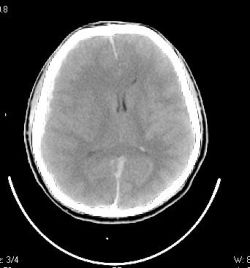
|
Philippines, 08 Jan 2026 |
Home >> News |
 |
||||
|
|
|
|
CONCUSSIONS AND BRAIN BLEEDS By Rene Bonsubre, Jr. PhilBoxing.com Fri, 28 Oct 2016  For the past few years, sports fans have become more aware of the dangers of brain injuries in sports. Concussions have been widely discussed in the media and sports commentators covering football, ice hockey, basketball and other contact sports make it a point to talk about concussion protocols when an athlete receives a strong blow to the head. Boxing, because of the nature of the sport, has long been associated with injuries and fatalities. Various boxing organizations and commissions around the world have made efforts to minimize the risks but because the head remains a main target, boxers are still at high risk for brain injuries. But recent technological advancement in mobile detection devices are now being studied so they can be utilized to help in assessing a boxer?s post-fight condition and make strides taken towards making the fight game as safe as possible. These sideline assessments were developed mainly for American football for the acute assessment of concussion. There are internet articles about the development of a new handheld blood test to detect and evaluate mild traumatic brain injury or concussions. Only a single drop of blood is needed for testing if the athlete has a concussion using protein biomarkers released into the blood. Another example of sideline devices being tested is the Halifax Consciousness Scanner, which is used to diagnose concussions or other brain abnormalities by measuring the brain?s electrical activity. There was also a recent report on the Skynews website about a new handheld brain scanner that could be used by ring physicians. It states that the British Boxing Board of Control (BBBC) is closely monitoring trials of a scanner can detect brain bleeds with an accuracy of 90%, often before any symptoms such as headaches or confusion become apparent. Ringside doctors are all too familiar with cases where boxers don?t show symptoms right away and have to be reevaluated within the next few hours. The infrascanner, using laser technology, can detect the presence of blood inside the brain within a few minutes. Devices such as this, when approved for routine use, will certainly save lives. I have been a ring physician with the Games and Amusements Board (GAB) here in the Philippines since 2009 and with the Professional Boxing Commission (PBC), International for the past two years. One of the most important things that I have learned is that communication between the referee and the ring doctor is vital for safety in boxing. I have had the privilege of working with experienced American referees during my stints in Macao and mainland China. They make it a point to discuss their expectations and various scenarios that we might face during the course of the fight. The experienced referees of PBC,International are from the Philippines and Thailand. We talk about the boxers before the fights; knowing the history of the fighters is important. I have not experienced being at ringside for a fight that resulted in a fatality but I have accompanied boxers here in the Philippines to the hospital when I feel that they needed to have a CT-scan of the brain after they complained of dizziness or vomited after a fight. I make it a point to see their CT-scan results and update the GAB personnel about their status. I have always felt that was the least I could do for the boxers, who are the ones risking their lives inside the ring. Assessment of a boxer once he or she exhibits danger signs after a fight should be individualized. No two boxers are the same. Paramedics and a well-equipped ambulance should always be on stand-by. I also ask the paramedics before the fight card starts if they have prior experience with boxing matches. I make it a point to brief them if this was the first time they were assigned to a fight card. During rules meetings and during pre-fight physicals, boxers should be reminded to be honest in answering the physical exam questionnaire and not to dismiss a headache that they were having going into their bout. Trainers and boxers should also be educated about the dangers of trying to lose a lot of weight in a short period of time. A thorough physical exam and adequate rest periods for boxers who suffered knockouts are essential. The Professional Boxing Commission (PBC),Intl also utilizes the corner inspectors to help keep boxers safe during the fight. Their main job is to watch for any rule violations in the fighters? corners but during fight cards held in China, the Chinese corner inspectors working with PBC,Intl. are briefed about the danger signs to watch out for since they are closest to the boxers in between rounds. The corner inspectors are also told that, if you understand the language of the fighter, and you notice that he is not speaking properly, or answering his trainer in a coherent manner, bring it to the attention of the referee and ring doctor right away. Using advanced technology is good but nothing can replace conscientious boxing officials and teamwork. By working together we can reduce risk to a minimum. Click here to view a list of other articles written by Rene Bonsubre, Jr.. |
|
|
PhilBoxing.com has been created to support every aspiring Filipino boxer and the Philippine boxing scene in general. Please send comments to feedback@philboxing.com |
PRIVATE POLICY | LEGAL DISCLAIMER
developed and maintained by dong secuya © 2026 philboxing.com. |